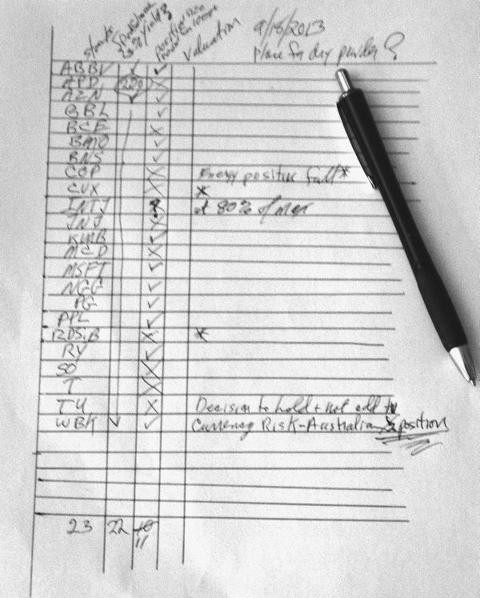5 Best Undervalued Stocks To Own Right Now
Post on: 9 Июль, 2015 No Comment

Calculating intrinsic value is great if it was dependable and possible to calculate accurately. The 1938 thesis by John Burr Williams, The Theory of Investment Value, was groundbreaking and introduced us to fundamental analysis. He proposed calculating intrinsic value of a stock by discounting all future cash flows to the present. No argument, as investors we know this.
But chances are we dont come close to the true present value as the future is speculative. Change any of the inputs and we get widely different present value calculations. The timing of future cash flows, growth rates, discount rates, future shares outstanding or future debt, terminal value and ultimately the markets interpretation of its risk and fair value.
So what can we do? Give up? No. We can try to reduce the portion of our investment thesis thats based on forecasting or speculating. Lets attempt to increase our odds of determining fair value at least in the short term. We could try a few approaches. But for this article Im going to lean on the teachings of Ben Graham. We all know this is not the only approach to reach for alpha.
Having said that we will start with the balance sheet. This starting point to determine fair value is easier in comparison to forecasting future cash flow, discount rates, growth rates and the other inputs: cash, receivables, inventory, prepaid expenses, property plant and equipment, long-term investments.
So if we can come up with a reasonable fair value of these assets and compare it to our liabilities we may be a step closer. Once we make adjustments like the fair value of real estate, equipment or inventory, and then include our liabilities, we have a number. That number is kind of like book value but adjusted up or down for fair market value of real estate and the certainty of items like cash or net receivables. Once we have a value we will compare that value against the markets value for the stock.
The difference between step one of our more certain estima! te versus the market must be reconciled and challenged. Can this variance be justified by our intrinsic value estimates of future cash flows discounted to the present? So the market is assigning a premium or discount versus our step-one calculations using the balance sheet. Hopefully, this will help us to uncover over-looked value with more certainty and make the discounting future cash flow a more reasonable and useful portion of the valuation process.
Joel Greenblatt made the point that if you can find a company that is undervalued, in time the market will recognize and adjust. Two examples of Ben Graham-like stocks that reported additional insider buying today (06/18/12) and are sitting on assets that could prove the markets value as temporary insanity:
LGL: The LGL Group (LGL) was founded in 1917. LGL manufactures electronic components.
The per-share current book value is $9.65. But within that $9.65 book value per share is cash of $5.15, net PPE of 1.79, inventory of 2.24, and AR of 1.83. Furthermore, current assets less current liabilities is $6.62 per share. LGLRead More>>














